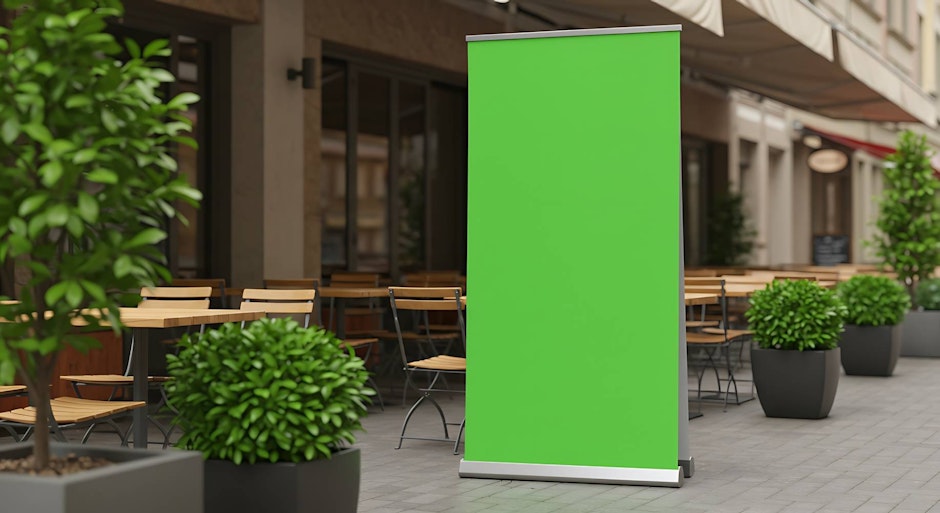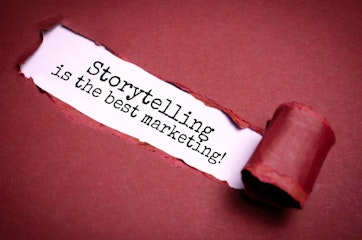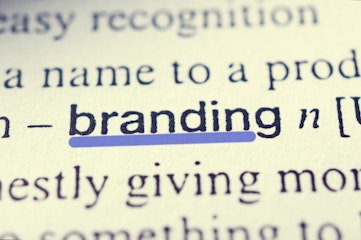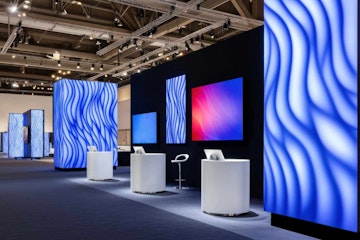When it comes to banners, size is never a trivial decision. Too small and the message fades into the background; too large and it overwhelms the environment or wastes material. The right choice sits in a careful balance between purpose, placement, and practicality. That’s why choosing dimensions isn’t just a question of aesthetics - it’s about impact, legibility, and even cost efficiency.
Why Banner Size Matters
At first glance, banner sizing seems straightforward: larger banners are more visible, smaller ones are more discreet. But in practice, it’s rarely that simple. Not only is the scale of your banner tied to the distance from which it will be viewed, but it also shapes how your audience processes the information. A cramped banner dilutes the effect of even the strongest design, while an oversized one can dominate a space in ways that feel clumsy or out of place.
The real consideration lies in proportion. Every environment - whether a trade show booth, a high street window, or a website - has spatial limits. The banner must work within those boundaries without compromising on clarity.
What Are The Standard Sizes For Banners?
Physical banners generally follow a few well-established sizes. These serve as benchmarks because they balance material efficiency with visibility. Common dimensions include:
Small banners (0.6m x 1.2m or similar): often used for shop fronts, indoor promotions, or small-scale events.
Medium banners (1m x 2m): versatile for both indoor and outdoor use, giving enough room for text and graphics without feeling excessive.
Large banners (2m x 4m and beyond): designed for maximum visibility at outdoor events, stadiums, or along building facades.
For digital banners, the logic is different. Standard formats are dictated by web platforms - leaderboards (728x90px), skyscrapers (160x600px), and rectangles (300x250px). Each has its own function within online advertising strategies, tailored to user attention and screen layout.
And yet, it’s not enough to simply pick a “standard.” The best size is always contingent on context: where will it be seen, and how will it be consumed?
How Does Distance Influence Banner Size?
Imagine standing five metres away from a banner. A font that looks generous up close becomes illegible at that distance. There’s an old design principle suggesting one inch of letter height is readable from ten feet away. It’s not perfect, but it highlights an important truth: visibility scales with distance.
This is where larger banners have their advantage - they ensure text and graphics can be absorbed quickly, even by people moving past. Not only is readability enhanced, but recall is stronger too. If the banner is meant to be seen from across a hall or on a roadside, underestimating scale risks losing the audience altogether.
On the other hand, when banners sit in close quarters, such as behind a product stand or inside a retail unit, oversized lettering can feel aggressive. Here, restraint pays off. The design should sit comfortably in its environment, not dominate it.
How Should Design Affect Size Choice?
There’s a direct relationship between design ambition and the physical or digital space required. A minimalist design - few words, bold colours, simple imagery - can afford to be smaller without losing impact. Complex messaging, however, demands more room.
Not only is spacing important for readability, but it also affects aesthetic balance. Too much text on too little surface creates clutter, while a huge banner with sparse elements risks looking unfinished. Put simply, achieving the right proportions and balancing design elements on a banner is an art in and of itself.
What Role Do Materials And Stands Play?

Size choices are not purely visual - they’re also practical. A banner that looks good on screen may not translate well into a real-world setting if the stand or material can’t support it. Outdoor banners require stronger, weather-resistant fabrics. Indoor roll-up designs, aka stands for promotional signage, need portability and durability.
The scale of the banner must therefore correspond with the strength of its supporting structure. Lightweight stands collapse under excessive size, while overbuilt materials for small banners feel unnecessarily heavy.
Is Bigger Always Better?
There’s a temptation to think visibility equals effectiveness. And yet, bigger doesn’t always mean better. Oversized banners in confined areas risk alienating rather than attracting viewers. They can block sightlines, intrude on other displays, or create awkward empty space around under-filled designs.
Conversely, small banners can still carry weight if strategically placed. A compact pull-up banner at eye level, in the right context, can outperform a sprawling one mounted high above. The nuance lies in matching scale to purpose rather than defaulting to maximum dimensions.
When To Break From Standard Sizes
While standard formats dominate, there are moments when custom sizing becomes the smarter option. A venue with unusual proportions might demand a banner cut to specific dimensions. Digital campaigns targeting niche platforms may benefit from non-standard pixel counts optimised for unique placements.
Still, customisation introduces challenges. Costs typically rise, and compatibility with stands or fixtures becomes trickier. The choice should therefore be deliberate: only when the benefits of a tailored fit clearly outweigh the convenience of established sizes.
Final Thoughts
Banner size is never an arbitrary decision. It threads through visibility, design balance, material considerations, and context of use. Not only is the right choice about legibility, but it also defines how comfortably the banner sits in its environment and how effectively the message lands.
From trade shows to digital campaigns, the guiding principle remains the same: clarity first, spectacle second. The best banner is not the largest or smallest, but the one scaled precisely to its purpose. And that, ultimately, is the measure of success.








